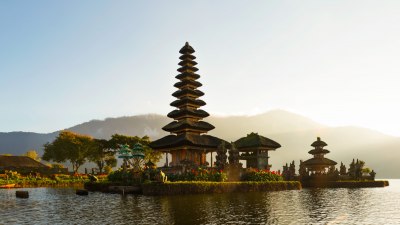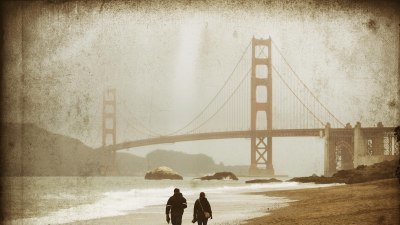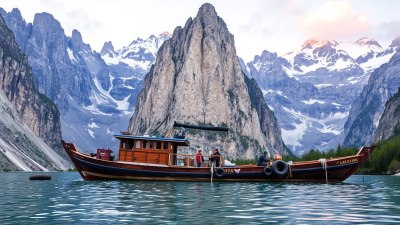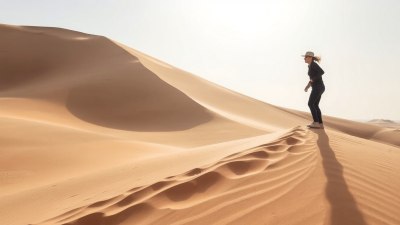Jaw-Dropping Glacial Lakes That Look Unreal
Explore the most stunning glacial lakes around the world that seem straight out of a fantasy.

Glacial lakes captivate nature lovers and adventure seekers alike, creating an ethereal blend of vibrant colors, stunning landscapes, and serene waters. From the icy blues of Greenland to the deep greens of New Zealand, these bodies of water display a natural beauty that feels almost unreal. In this article, we will embark on a journey through some of the most breathtaking glacial lakes in the world, delving into their unique features, locations, and the experiences they offer to visitors.
1. Moraine Lake, Canada
Nestled in the heart of the Canadian Rockies, Moraine Lake is renowned for its brilliant turquoise waters, surrounded by towering peaks and lush forests. The lake gets its striking color from light reflecting off the glacial silt suspended in the water, creating an unforgettable view. The best time to visit is during the summer months when the lake is at its fullest, usually from mid-June to mid-September. Visitors can enjoy hiking, canoeing, and photography in this stunning location, with the Rockpile Trail offering spectacular viewpoints.
2. Lake Louise, Canada
Another gem in Alberta, Canada, Lake Louise is famous for its emerald green waters backed by glaciers and craggy mountains. A UNESCO World Heritage Site, the lake is part of Banff National Park and provides visitors with a range of activities throughout the year. In the summer, kayaking and paddleboarding are popular, while winter invites ice skating and snowshoeing on its frozen surface. The Fairmont Chateau Lake Louise provides luxury accommodations with sweeping views of the lake, making it a perfect spot for relaxation after a day of exploration.
3. Lagunas Coloradas, Bolivia
Located in the Eduardo Avaroa Andean Fauna National Reserve, Lagunas Coloradas features a unique reddish color caused by red sediment and the presence of microorganisms. This spectacular lake is often surrounded by flocks of flamingos, thriving on the rich nutrients available. Photographers will revel in the unique hue of the water contrasting with the stark landscape of the Andes. The best time to visit is between May and November when the weather is drier, making the lakes easier to reach and explore.
4. Lake Pukaki, New Zealand
Famous for its stunning blue color that reflects the skies above, Lake Pukaki is located on the South Island of New Zealand, with the backdrop of Aoraki/Mount Cook. The vivid color is a result of glacial flour that is carried into the lake by the surrounding rivers. The lake serves as a gateway for those heading into the Southern Alps and is often used as a filming location due to its surreal beauty. The area also features walking paths and viewing areas perfect for soaking in the panorama.
5. Kluane Lake, Canada
One of the largest lakes in the Yukon Territory, Kluane Lake boasts bright cyan waters surrounded by the Kluane National Park and Reserve. This glacial lake is renowned for its immense landscape, combining mountains, glaciers, and lush valleys. The lake offers numerous outdoor activities, including fishing, kayaking, and hiking. For adventure seekers, the Kluane Icefield provides breathtaking views and breathtaking trails that challenge even the most experienced hikers, making Kluane a must-visit for those seeking a taste of the wild.
6. Emerald Lake, Canada
Emerald Lake stands out for its vibrant jade green waters which are surrounded by stunning peaks and forests within Yoho National Park. The unique color of the lake is due to the glacial runoff and the presence of fine rock flour in its waters. The area features numerous trails, ideal for both leisurely walks and challenging hikes. Visitors can also enjoy canoeing in the calm waters, taking in the spectacular scenery while basking in the tranquil ambiance of this hidden gem.
7. Spotted Lake, Canada
In British Columbia, the Spotted Lake is a remarkable sight, especially during summer when it reveals its colorful mineral-laden pools. The lake’s spots are formed due to the evaporation of water, concentrating minerals that can be seen in vibrant colors ranging from deep blues to yellows and greens. While swimming is not permitted, the unique formation of this lake allows for stunning photography and provides insight into the natural mineral springs of the area. The surrounding landscapes and wildlife add to the allure of this unusual lake.
8. Jökulsárlón, Iceland
Jökulsárlón is a remarkable glacial lagoon located at the edge of Vatnajökull National Park. The lake is filled with icebergs that have calved from the glacier, creating a mesmerizing landscape of blue and white. The contrast between the deep, reflective waters and the towering icebergs creates a stunning backdrop that attracts visitors year-round. Boat tours provide an up-close view of the icebergs and the surrounding wildlife, including seals and a variety of birds, making it a fantastic experience for nature enthusiasts and photographers alike.
9. Teletubby Lake, China
Located in the Qilian Mountains, the Teletubby Lake is named for its vibrant color and rolling hills that surround it, similar to the set of the children’s television show. The lake boasts a deep blue color that is both calming and captivating, often contrasting beautifully with the greenery around it. Its remote location makes it a serene escape for those seeking tranquility away from the bustling cities. Hiking in the area offers panoramic views of the lake, allowing visitors to appreciate its beauty from various angles.
10. Lake Vostok, Antarctica
This massive subglacial lake lies beneath Russia’s Vostok Station and is one of the largest lakes in the world, hidden beneath 4 kilometers (2.5 miles) of ice. Although it remains largely unexplored, scientists believe it holds secrets about ancient ecosystems and climate change. Lake Vostok’s pristine waters have been isolated for millions of years, and studying them may provide insights into extraterrestrial life as well as Earth’s climate history. While the lake itself is not accessible to tourists, its mystery continues to intrigue scientists and adventurers alike.
11. Glacier Lake, Pakistan
Glacier Lake, located in the stunning Hunza Valley of Pakistan, is a hidden paradise known for its breathtaking scenery, crystal clear turquoise waters, and the towering Rakaposhi mountain in the background. The lake is formed from melted glaciers, creating a surreal landscape often visited by trekkers and adventure enthusiasts who seek to explore the surrounding valleys and peaks. Photographers flock to this hidden gem, capturing the mesmerizing reflections of the mountains in the lake. The best time to visit is during the summer months when treks are accessible, and the weather is mild.
12. Crater Lake, Oregon, USA
Formed in the caldera of an ancient volcano, Crater Lake is renowned for its deep blue color and exceptionally clarity. The lake’s vibrant hue is a result of its depth and purity, making it one of the cleanest lakes in the world. The park surrounding Crater Lake offers numerous trails for hiking, viewing platforms, and boat tours. Visitors can explore the island in the center of the lake and learn about its unique geological history. During winter, the lake transforms into a snowy wonderland, providing opportunities for snowshoeing and cross-country skiing.
In conclusion, glacial lakes represent the awe-inspiring beauty of nature, showcasing colors, shapes, and formations that can seem almost otherworldly. Whether you are seeking a tranquil escape, an adventure-filled vacation, or simply wish to soak in the beauty of these stunning locations, glacial lakes offer unforgettable experiences. As climate change continues to impact our environment, these breathtaking water bodies may change, which underscores the importance of experiencing and appreciating them while we still can. Plan your next journey to one of these jaw-dropping glacial lakes, and immerse yourself in the magic of nature.











